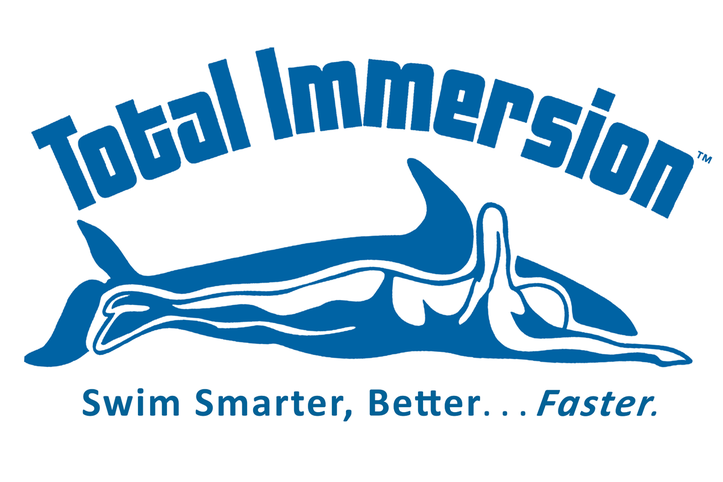 Time to Read: ~4 min
Time to Read: ~4 min23 Strokes
I must have gotten into some bad habits during my training this week. After what felt like a super successful baseline mile attempt, I felt really confident. But, a couple days letter when I was dying to go back and see if this was repeatable I had a terrible swim. I blamed it on being tired, fighting a cold, and having just returned from downhill skiing, BUT these challenges lingered as class started on week #6.
We started with 200 using a Tempo Trainer Pro. Shane asked us to count strokes. My typical average is 18-21 strokes with 17 and 22 being outliers for me (22 more than 17 in truth). Tonight my number was 23 for EVERY length. This set my morale on LOW to begin. I knew something was off. I wasn't snapping from the hip. My arms felt incorrect. But, I really wasn't sure exactly what was off. Shane told me I was going too deep with my stroke and that was causing me to lose speed. A diagnosis. Now I could move forward.
Swim Relaxed
As we worked with our dry land routines, Shane reminded us that we need to stay relaxed.
Unnecessary muscular and connective tissue tension affects balance. The critical element of integrating breathing with freestyle is to minimize disturbance to balance. Keep your head and neck relaxed.
After Shane I learned that I was diving too deep, I modified my stroke and was back to my 18 strokes across the pool. However,this didn't feel sustainable for me today. I struggled with keeping a high poise point and working on the tipping point. Shane asked me about my stroke count and while I was happy to be back in my "acceptable realm" I told him it was hurting my brain to think about the proper form. He chuckled and said that was a good place to be.
We worked again on single side breathing, taking a breath every stroke. This was not nearly as challenging as it was last week. It could have just been that it felt more familiar, or perhaps it was just clicking a little better. While I still struggled on my left, I didn't feel like I was drowning the entire time. My stroke counts were similar to last week.
"Yin Yang"
Our last drill was called the Yin Yang drill. Shane asked us to swim 25 yards with as much "force" as we could while striving for the lowest possible SPL without being glide junkies and asked us to maintain our great technique. For our return 25 we were asked to swim with as fast a cadence as we could manage.
Shane reminded us to be aware of our elbow bend at the pose point. He reminded us to avoid reaching too far forward above the water with a straight arm. He also suggested we shorten the recovery in the back to help keep our cadence quick. This action encourages a more patient lead arm. To keep a quick cadence, we also needed to strive for "minimal air time" for the recovery hand, while keeping maximum front quadrant time. The final piece. It all comes down to the shoulder shrug.
I struggled with this. On the "yin" portion of the drill, I was able to hit 18 strokes, but it was through a mix of glide and pushing. He was clear that we were to avoid glide as the technique for hitting minimum strokes, but I am so used to this strategy that it felt foreign to push hard on the water. On the "yang" portion, he advised us to keep a quick cadence, while avoiding the "washing machine" feel. I definitely felt like a washing machine. It took me 23 strokes to get across the pool, and I felt like I was in a perpetual state of panic. By the time we hit the 3rd time through this drill, I was physically exhausted.
Sometimes when I give my 11 year old son several directions, he will just spaz and not be able to function at all. He'll say, "but Mommy you are asking me to do too much at once!" With this drill, I felt like I had just been given so much to focus on that my brain and body just freaked out. I don't feel like I did anything that Shane asked, other than get from one end of the pool to another. However, as with any new drill, week #1 is the most challenging. I look forward to practicing this and trying it again next week.
The Final Sustained Swim
To conclude the evening, Shane asked us to swim for 5 minutes continuously with no pausing at the end of each length. This should have been a piece of cake after my mid-week full mile practicing. I set my tempo trainer at 145, and started swimming. While swimming, we were to focus on keeping our stroke count in the 3 stroke range from when we started and work on a sustainable breathing pattern and rate of exhalation.
This went surprisingly well considering I had to work hard with myself to stay for it. 2 member of the class had to leave early due to commitments, and it was 8:30 already. I was cold, tired, and figured, "really what will happen if I don't stay?" But, true to form, I worked to be my best self and suck it up and swim the 5 minutes to the best of my ability. This was a good decision. I settled in, calmed my head and stopped feeling bad about struggling with so much this evening. This process has its its ups and downs, the fast progress and plateaus. The important part though is that I'm always working hard to improve, become more comfortable and push my body.
After I finished the swim, I decided I would sign up for the Tri for the Y at the YMCA in Ithaca again this year. I have only done this race once, back when I truly couldn't swim (I finished right at the time cut off for the swim, and ended up either last or 2nd from last in the overall results). This race will be good because the pool has a deep end. I tend to panic in deep water, so it is a good step to practice before hitting the lake. Also, it is early in the season. I may have not had a chance to be outdoors on a bike very much before the race. It will be a good test of baseline bike fitness. It also has a long run for a Sprint Tri - 5 miles. The run is challenging but is likely to be my favorite part of the race!!
The Video
This video is from our final 5 minutes of swimming. I need to work on keeping my legs calm behind me so that I don't break the water with my kick. I also need to work to start my kick with my left leg and my right leg vs always using my right leg. And then there's the poise point, staying in the front quadrant etc.
